Fundamental Parts of a Camera
December 11
13 min. to read
 Today, we’re going to take a closer look at these pieces, which we call camera components. We’ll talk about the lens, which is like the eye of the camera. It sees the world and captures pictures. Then there’s the shutter, a little door that opens and closes really fast to let light in. And, of course, we can't forget the body, where all these parts fit together.
Today, we’re going to take a closer look at these pieces, which we call camera components. We’ll talk about the lens, which is like the eye of the camera. It sees the world and captures pictures. Then there’s the shutter, a little door that opens and closes really fast to let light in. And, of course, we can't forget the body, where all these parts fit together.
So, whether you’re new to photography or just curious about how cameras work, you’re in the right place. Let’s explore all these parts!
The Lens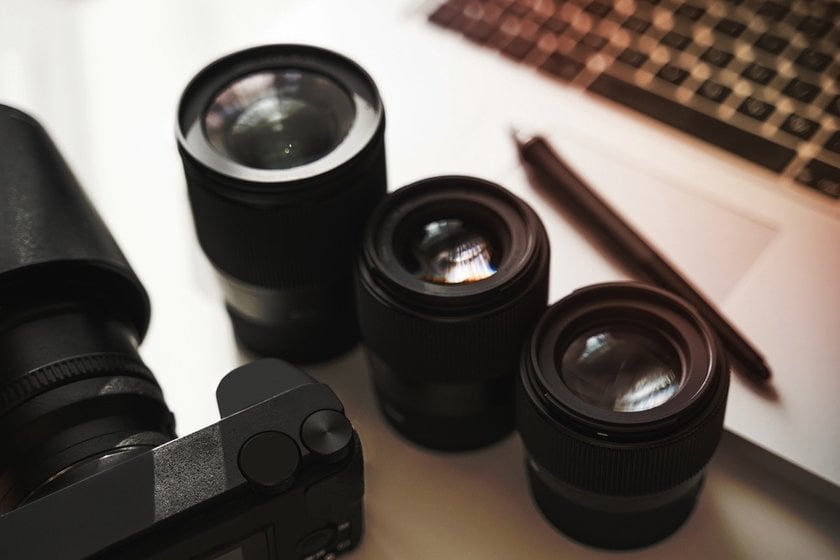
The lens is a crucial part of the anatomy of a camera, much like the eye is essential to the human body. It's the part that allows the gear to 'see' and capture images. Understanding the lens is like knowing how the camera's eye works.
Different Types of Lenses for Various Needs
In the world of photography, lenses come in several types, each serving a different purpose:
Prime Lenses: Think of these as the fixed eyes of the camera. They don't zoom in or out but are great for taking really clear pictures.
Zoom Lenses: These lenses are like having an adjustable eye on your camera. They let you zoom in and out, so you can capture things close-up or far away without moving.
Telephoto Lenses: Imagine having a telescope on your camera. That's what these lenses are like, perfect for photographing distant objects.
Key Parts of a Lens
There are a few important parts of the lens that help create great pictures:
Aperture: This is like a small window inside the lens. It can open wide to let in a lot of light (good for dark places) or close up to let in a little light (better for bright places).
Focal Length: This determines how much of what the lens can see in front of you. Some lenses see a wide area, while others focus on just a small part.
Lens Coatings: These special layers on the lens make your pictures clearer and reduce glare.
Understanding these lens elements is an important part of learning the anatomy of a camera. Each part affects how your photos will turn out, so knowing about them helps you take better pictures.
The Body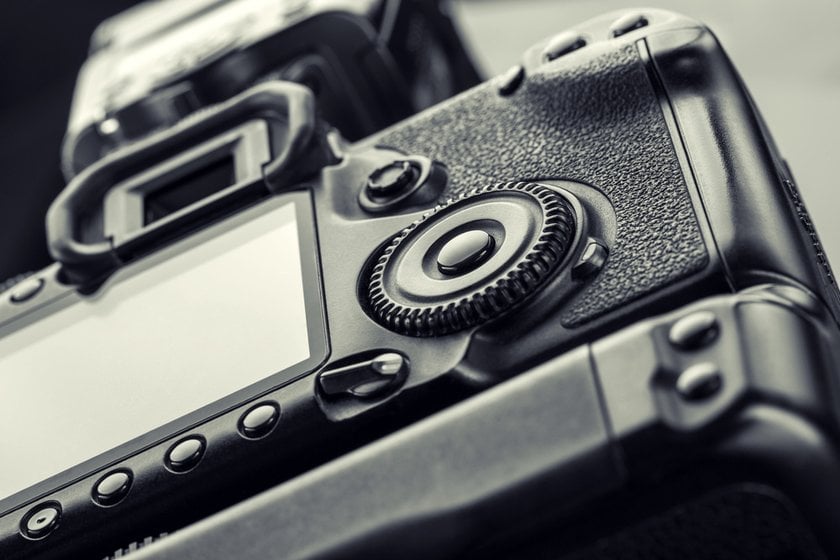
Structure and Functionality
Think of the camera body as the backbone or the main frame of the camera. It's like the body of a car that holds everything together. The body is really important because it holds all the other parts we’ve talked about, like the lens, and connects them together. It’s the part you hold when you take a picture, and it has buttons and screens on it. If you look at the parts of the camera diagram, the body is the big part that everything else attaches to.
Advanced yet easy-to-use photo editor
Get Luminar Neo NowDifferent Types of Camera Bodies
Just like there are different types of cars, there are different types of camera bodies:
DSLR Cameras: These are big, professional-looking cameras. They have a mirror inside that lets you see exactly what the lens sees.
Mirrorless Cameras: These are usually smaller than DSLRs. They don't have a mirror, so they are lighter, but they still take great pictures.
Point-and-Shoot Cameras: These are small, easy-to-use cameras. They’re great for everyday pictures and are super portable.
The Heart of the Camera
Inside the camera body, there are lots of important parts that make the camera work:
Sensor Types: The sensor is like the heart of the camera. It captures the light and turns it into a picture. There are different types of sensors, but the main thing to know is that bigger sensors usually take better-quality pictures.
Image Processor: This is like the brain of the camera. It takes the information from the sensor and turns it into the photo you see.
Storage Options: This is where the camera keeps the pictures you take. Most cameras use memory cards to store photos, which you can then transfer to a computer or print out.
The camera body is important because it holds everything together and ensures all the parts work well together. By understanding the different types of bodies and what’s inside, you can choose the best camera for the kind of pictures you want to take.
The Rhythmic Shutter and Beyond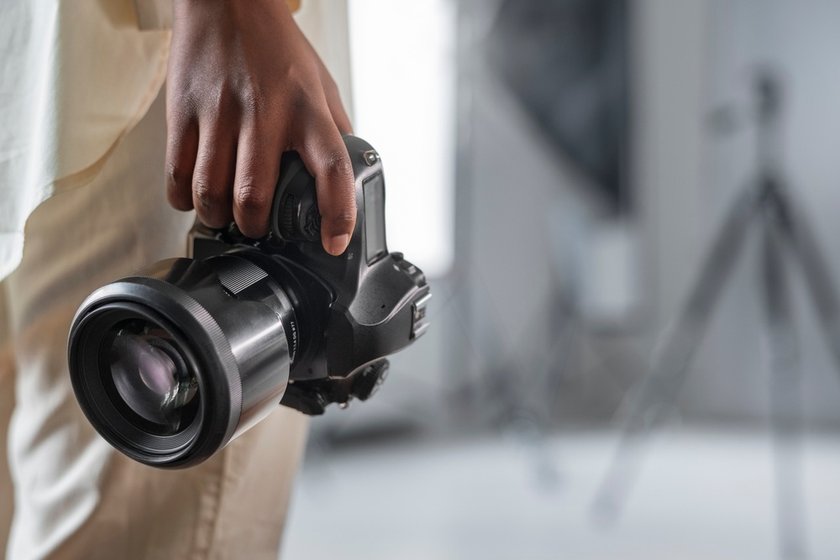
If you've ever seen a camera label parts diagram, the shutter is that small part inside the camera, right before the sensor. It is like a fast-moving door that opens and closes each time you take a picture. It’s really important because it decides how much light gets to the part of the camera that captures your photo.
When you take a picture, the speed of the shutter is key. It moves fast in a lot of light, so your photo isn’t too bright. In darker places, it moves slower to let in more light. This is important for catching things that move. A quick shutter can stop the action, like a bird in mid-flight, while a slower one can show motion, like a running stream. Want to learn more about setting this up in manual mode? Check out our "Photography Settings Cheat Sheet."
There are two main kinds of shutters in cameras. One is mechanical, which is like a little curtain that moves inside. The other is electronic, which doesn’t have moving parts but works electronically.
Remember, the shutter is a big part of how your photos turn out. It works with light and movement to help you get the picture you want. And if you’re curious about what ISO is in a camera and how it changes your photos, look at our post about it!
Additional Essential Components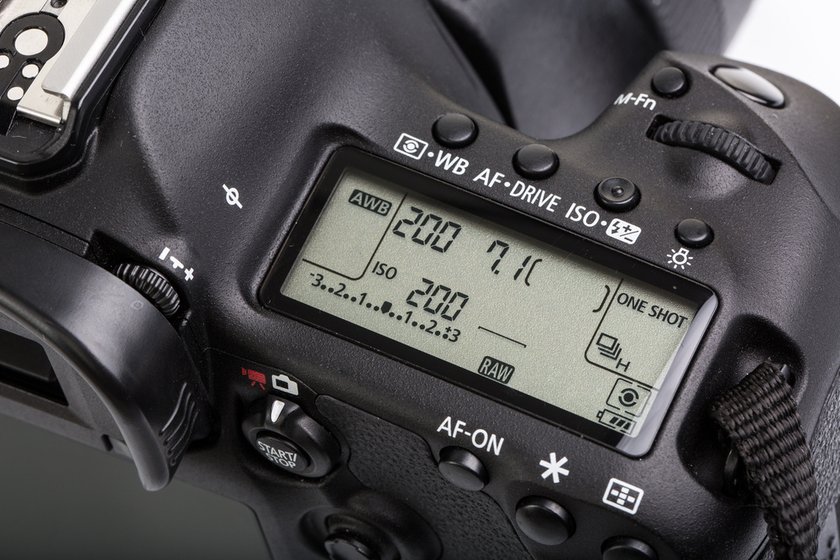
Besides the lens, body, and shutter, a camera includes several other features that make photography smoother and more enjoyable. The viewfinder is where you look through to frame your shots, ensuring you capture exactly what you intend. On the back of the camera, the display screen allows you to review the pictures you've taken and navigate the camera's settings. Both are crucial for getting your composition just right.
A reliable battery is at the heart of your camera's functionality, keeping it powered up and ready to go. The memory card plays a key role, too, serving as the storage space for all your captured moments. Without a good battery and a spacious memory card, capturing and saving your photos would be impossible.
Additionally, modern cameras often have connectivity features like WiFi and Bluetooth. These make it easier to transfer your photos to other devices and offer the convenience of controlling your camera remotely.
All these elements combined enhance the overall photography experience, bringing ease and efficiency to your photo-taking process!
Post-Processing with Luminar Neo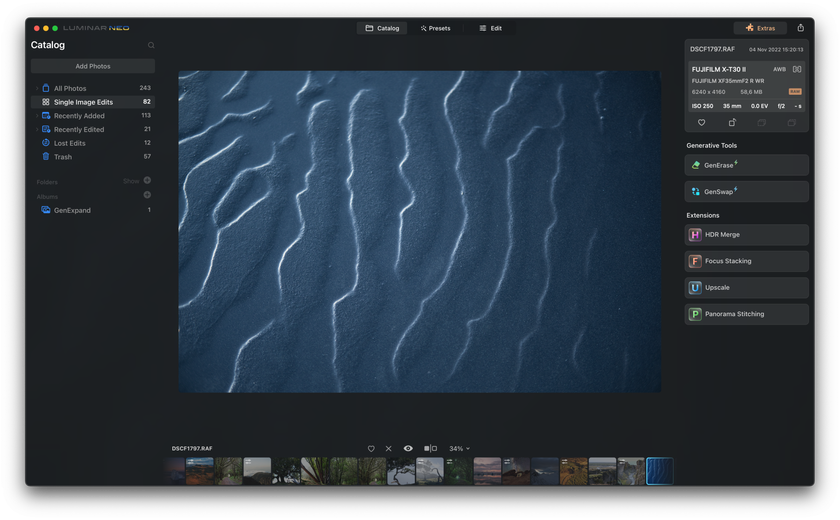
After taking your photos, it's time to make them look their best with Luminar Neo. This software is an easy image editor that's great for anyone who likes the idea of post-processing using AI technologies. It makes editing simple and fun, even if you're not a pro!
Luminar Neo has a lot of cool AI tools that do a lot of the work for you. For example, Skin AI makes people in your photos look great, and Sky AI changes the sky to make your landscapes stand out. Plus, with Relight AI, you can change how light looks in your photos after you've taken them. And if you want to get creative, GenSwap lets you easily change parts of your photo.
Your AI-Powered Photo Editor for MacOS and Windows
Discover Now!This software is all about making photo editing straightforward and enjoyable. Whether you’re just touching up a quick photo or working on something more professional, Luminar Neo’s mix of auto photo edit features and easy-to-use setup makes it a perfect choice for photographers at any level.
With Luminar Neo, your photos can quickly go from good to great!
Bottom Line
We've explored the essentials of what makes a camera work - the lens, the body, the shutter, and the additional components. Each part plays a key role in capturing those perfect moments. Understanding that is the first step to mastering photography, whether you're a beginner or an experienced enthusiast.
But photography doesn't end with the click of the shutter. Post-processing, especially with tools like Luminar Neo, is an integral part of bringing your vision to life. This easy image editor, with its features, simplifies and enhances the editing process, allowing you to transform your shots into stunning images.
In essence, photography is a mix of technical know-how and creative flair. By combining your understanding of your camera with your artistic vision, you're well-equipped to capture and create amazing photographs.
Keep experimenting, keep learning, and enjoy the journey of photography!











